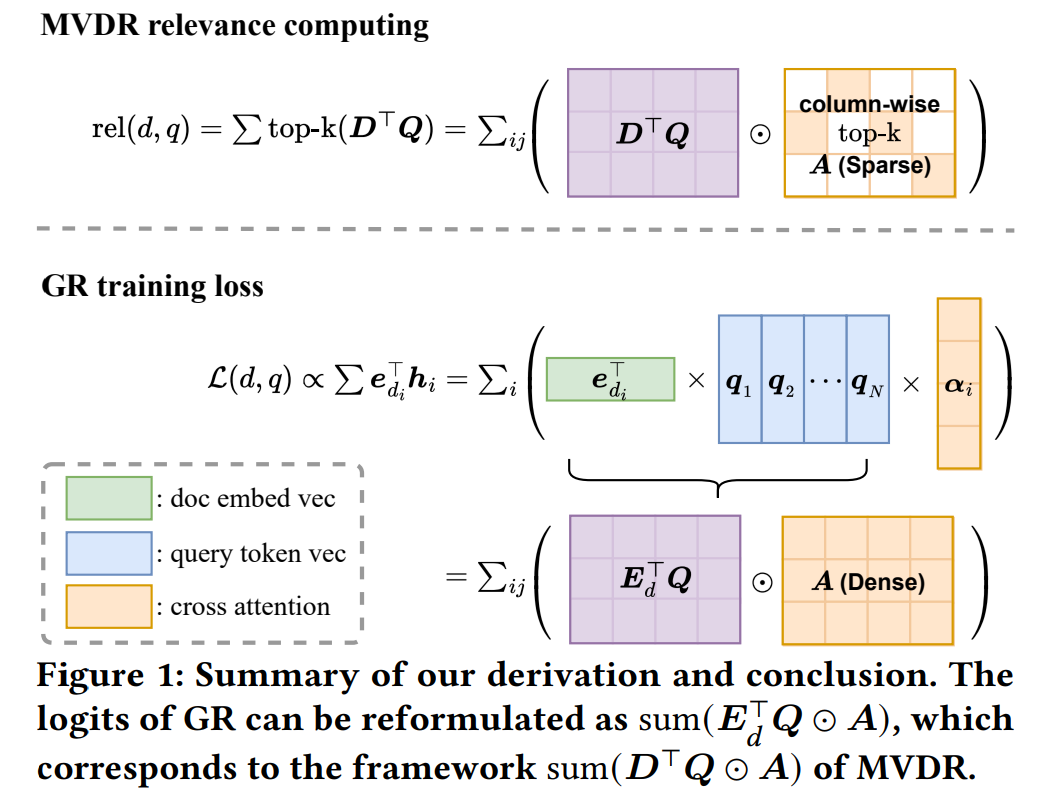Generative Retrieval as Multi-Vector Dense Retrieval
Generative retrieval generates identifiers of relevant documents in an end-to-end manner using a sequence-to-sequence architecture for a given query. The relation between generative retrieval and other retrieval methods, especially those based on matching within dense retrieval models, is not yet fully comprehended. Prior work has demonstrated that generative retrieval with atomic identifiers is equivalent to single-vector dense retrieval. Accordingly, generative retrieval exhibits behavior analogous to hierarchical search within a tree index in dense retrieval when using hierarchical semantic identifiers. However, prior work focuses solely on the retrieval stage without considering the deep interactions within the decoder of generative retrieval. In this paper, we fill this gap by demonstrating that generative retrieval and multi-vector dense retrieval share the same framework for measuring the relevance to a query of a document. Specifically, we examine the attention layer and prediction head of generative retrieval, revealing that generative retrieval can be understood as a special case of multi-vector dense retrieval. Both methods compute relevance as a sum of products of query and document vectors and an alignment matrix. We then explore how generative retrieval applies this framework, employing distinct strategies for computing document token vectors and the alignment matrix. We have conducted experiments to verify our conclusions and show that both paradigms exhibit commonalities of term matching in their alignment matrix.
PDF Abstract


 Natural Questions
Natural Questions
 MS MARCO
MS MARCO